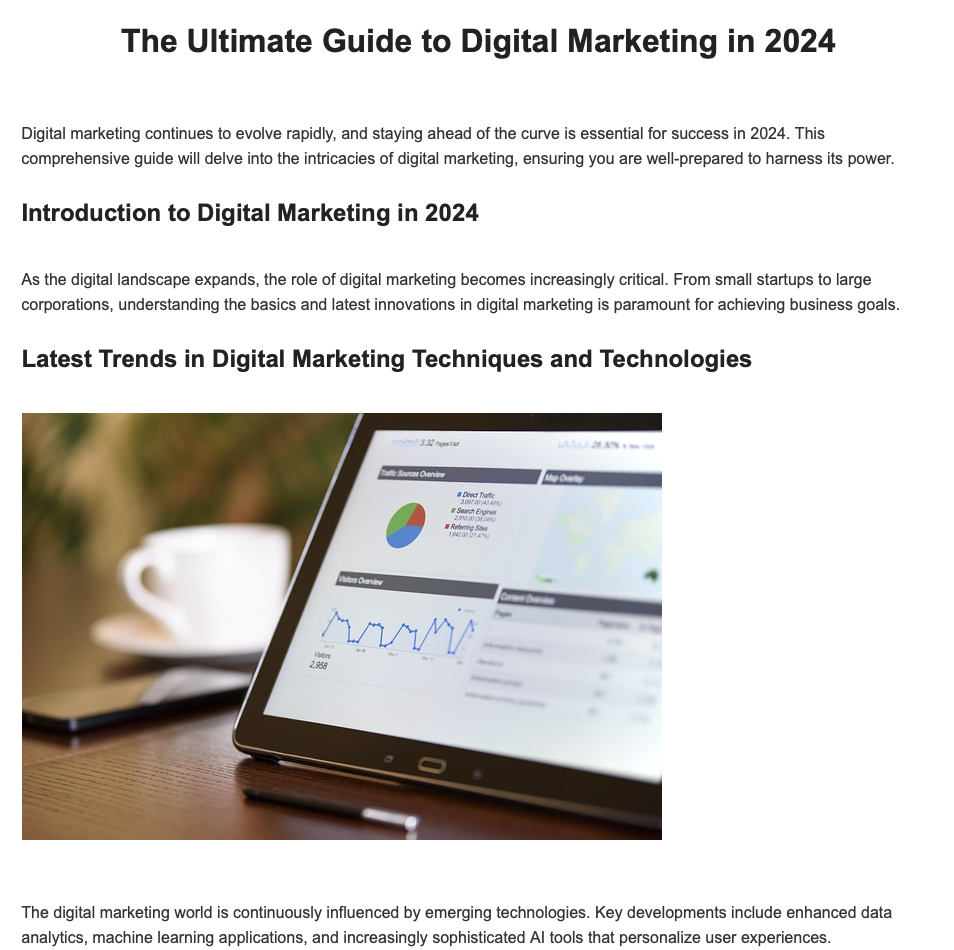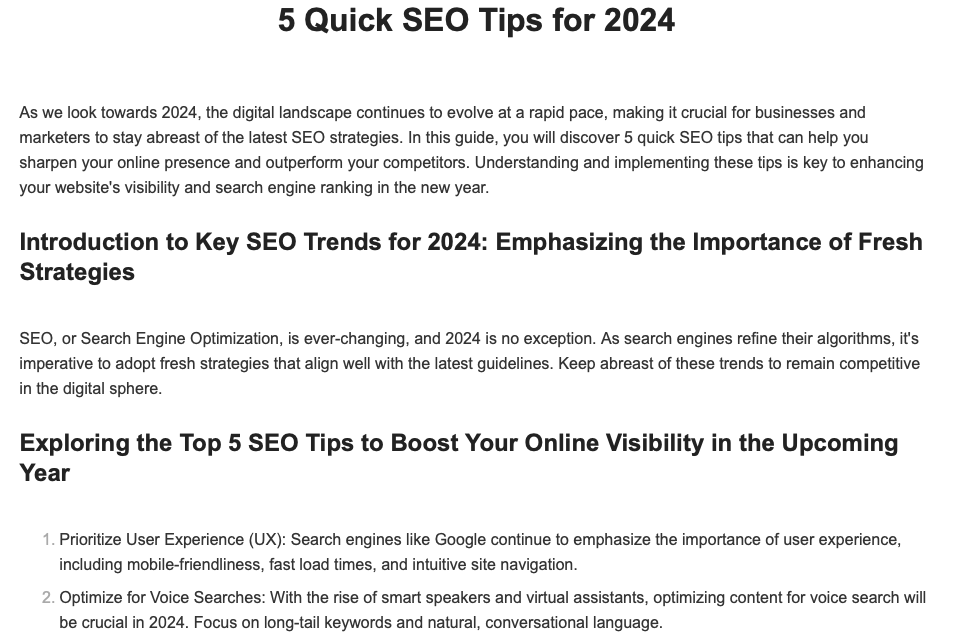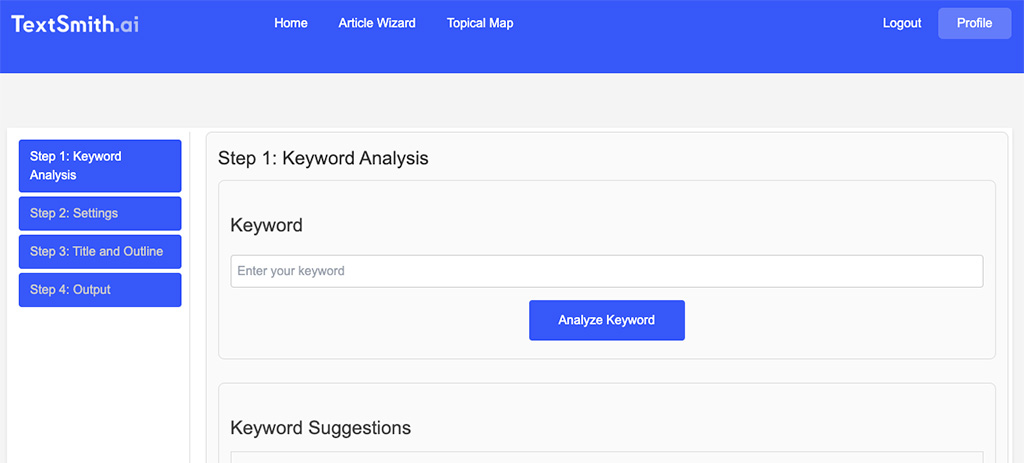Long-Form vs. Short-Form Content - SEO Implications
6 minute read
One of the key decisions you'll face when crafting content is whether to focus on long-form or short-form content. Understanding the implications of each can help you optimize your site for better search engine rankings, user engagement, and overall online authority.
Understanding the Difference: Long-Form vs. Short-Form Content
Long-Form Content typically consists of articles or blog posts that are 1,500 words or more. This type of content is designed to be comprehensive, covering a topic in depth and providing readers with valuable insights. Examples include in-depth guides, detailed tutorials, and comprehensive research articles.
Short-Form Content usually ranges from 300 to 1,000 words. This type of content is designed for quick consumption, providing concise information or news updates that are easy to digest. Examples include brief blog posts, news articles, and listicles.
Each type of content serves a unique purpose and caters to different audience needs and search intents.
SEO Benefits of Long-Form Content
Long-form content has gained popularity in recent years, largely due to its effectiveness in SEO. Here are some key benefits:
Increased Keyword Opportunities: Longer content provides more opportunities to naturally include a variety of related keywords and phrases. For instance, if you are writing about "digital marketing strategies," a long-form piece could cover subtopics like SEO, content marketing, email campaigns, and social media tactics, each with its own set of keywords. This aligns perfectly with creating a topical map, where all these subtopics can interlink and strengthen the core topic's authority.
Higher Search Engine Rankings: Search engines like Google favor long-form content because it tends to be more comprehensive and informative. Studies have shown that articles over 2,000 words are more likely to appear on the first page of search results. By using tools like our Topical Map Tool, you can ensure your long-form content covers a subject exhaustively, which can help improve your rankings for a range of related keywords. Read more about here about using topical maps for SEO
Enhanced Backlink Potential: Detailed, well-researched articles are more likely to be cited by other websites, generating valuable backlinks that boost your domain authority. For example, a comprehensive guide on "Content Marketing Strategies" is more likely to attract backlinks than a brief overview.
Improved Dwell Time and Engagement: Users spend more time on a page when the content is detailed and engaging. This increased dwell time can signal to search engines that your content is valuable, which can positively impact your SEO rankings.
Authority and Expertise Building: Long-form content positions your site as an authoritative source on a given subject, especially when you cover all aspects comprehensively. This not only attracts more readers but also encourages them to trust your site and return for more information.
SEO Benefits of Short-Form Content
Short-form content also plays a crucial role in your SEO strategy, particularly for targeting different audience segments and search intents:
Quick Consumption and Mobile Friendliness: Short-form content is ideal for users looking for quick answers, especially on mobile devices. For example, a brief article on "Top 5 SEO Tips for Beginners" can quickly address common queries and attract mobile users who need immediate answers.
Higher Shareability: Shorter content is often shared more frequently on social media due to its easily digestible nature. A concise post about "The Latest Trends in Digital Marketing" is more likely to go viral than a lengthy dissertation.
Frequent Publishing Opportunities: Short-form content can be produced and published more frequently, keeping your website active and engaging. Regular updates are a positive signal to search engines and can help improve your overall SEO performance.
Improved User Experience for Certain Queries: Sometimes, users just need a quick answer or a brief overview. Short-form content is perfect for these scenarios, such as FAQs or news updates, aligning well with user intent.
Balancing Long-Form and Short-Form Content in Your SEO Strategy
To maximize the benefits of both content types, consider implementing a mixed content strategy that leverages the strengths of each:
Understanding Audience Needs and Intent: Determine when to use long-form versus short-form content based on your audience's search intent. If your audience is looking for detailed guides and comprehensive information, long-form content is the way to go. However, if they need quick tips or updates, short-form content will serve better.
Using a Mixed Content Strategy: By combining both types of content, you can cater to different stages of the buyer's journey. For example, short-form content can attract users in the awareness stage, while long-form content can engage those in the consideration or decision stages.
Optimizing Content Based on Search Intent: Use tools like our Article Generation Tool to quickly produce both long-form and short-form content tailored to specific search intents. This tool can help you generate SEO-friendly content efficiently, ensuring that each piece aligns with your overall strategy.
Practical Example: Integrating Both Content Types
Let's consider a practical example involving the topic of "Digital Marketing." You could create a long-form guide titled "The Ultimate Guide to Digital Marketing in 2024," covering various aspects like SEO, social media, email marketing, and paid advertising.

This guide could link to shorter, supporting articles such as "5 Quick SEO Tips for 2024" or "Top 3 Social Media Trends You Need to Know."

By interlinking these pieces, you build a robust content cluster that improves SEO while catering to different user needs. You can also utilize the Topical Map Tool to visualize these connections and ensure that each piece of content supports your core topics.
Measuring the Impact of Content Length on SEO
To assess the effectiveness of your content strategy, track key metrics such as:
Page Views: Measure the number of views each type of content receives.
Bounce Rate: Analyze whether users leave after viewing just one page or if they explore further.
Time on Page: Evaluate how long users stay on each page to gauge engagement levels.
Conversion Rate: Track how effectively each type of content drives conversions, such as sign-ups or sales.
By regularly reviewing these metrics, you can refine your content strategy to focus on the formats that deliver the best results.
Conclusion
Both long-form and short-form content have their place in a well-rounded SEO strategy. By understanding the strengths and SEO implications of each, you can create a balanced approach that enhances your site’s visibility, user engagement, and authority. Tools like the Topical Map and Article Generation Tool can help you efficiently create and optimize both types of content, ensuring that your strategy remains comprehensive and effective.
Ready to take your content strategy to the next level? Start by building your topical map today and see how it can elevate your SEO efforts. Then, leverage our Article Generation Tool to fill in content gaps and keep your site dynamic and engaging. Whether you’re crafting a detailed guide or a quick tip post, there’s a strategy that fits your needs.
Explore our other articles to learn more about how topical maps can transform your SEO strategy and how AI-driven tools like TextSmith.ai can supercharge your content creation process.
Ready to Speed Up Your Content Process?
Generate hundreds of blog posts daily, fill content gaps, and establish yourself as an authority in your niche!

